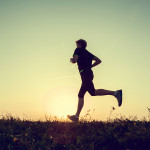By Bonnie Jenkins, Advanced Natural Wellness
Have you gained a few pounds around the middle? Are your triglycerides higher than they should be? What about your blood pressure, blood sugar, or cholesterol levels?
If you suffer from a combination of these problems, you may have insulin resistance.
Insulin resistance is a silent condition that increases the chance of developing type 2 diabetes. And because it has no symptoms, it’s often hard to spot – until it’s too late.
An estimated two-thirds of all Americans have insulin resistance. And that number just keeps growing. There are ways to reverse insulin resistance though!
Insulin 411
Before you can fully understand insulin resistance, you need to know what insulin does in the body. After you eat, the food is broken down into glucose, the simple sugar that is the main source of energy for the body’s cells. But your cells can’t use glucose without insulin, a hormone produced by the pancreas.
Insulin helps the cells take in glucose and convert it to energy. When the pancreas doesn’t make enough insulin, or the body is unable to use the insulin that is present, the cells can’t use glucose. When that happens, excess glucose builds up in the bloodstream, setting the stage for insulin resistance – and eventually diabetes.
MD Exposes the Hidden Danger to Your Eyes

When your eyesight starts to fail, it's a real problem. Suddenly you can't go to the grocery store... you can't get to the doctor if you have an emergency... you can't meet your friends for dinner…
Your "regular" doctor doesn't have time to keep up with the latest research. And the same goes for eye doctors. They go to school to learn how to fit you for glasses and contacts, but have no way of preventing the damage and loss of eyesight that threatens your freedom and independence.
Let me show you something that explains a LOT about how your eyes work.
In my FREE Special Report, I'll show you a HUGE, untapped resource for your eyes that safely and naturally restores clear, effortless eyesight.
Click here to get started...
If you have insulin resistance, your muscle, fat, and liver cells don’t use insulin properly. The pancreas tries to keep up with the demand for insulin by producing more. Eventually, the pancreas can’t keep up with the body’s need for insulin, and excess glucose builds up in the bloodstream. Many people with insulin resistance have high levels of both blood glucose and insulin circulating in their blood at the same time.
Insulin resistance tends to run in families. So if one of your parents or a sibling has the condition, your chance of developing it is higher. Excess weight also contributes to insulin resistance, because too much fat interferes with the muscles’ ability to use insulin. Lack of exercise further reduces your muscles’ ability to use insulin.
Unraveling the Mystery
Insulin resistance has few, if any, distinct symptoms. Occasionally, someone with a severe form of insulin resistance may experience dark patches of skin, usually around the neck. But most people suffer from vague symptoms like general fatigue, brain fogginess, or intestinal bloating.
Most doctors don’t even connect the dots until they discover that a patient suffers from multiple risk factors. Risk factors include excess weight around the waist, high LDL (bad) cholesterol levels, low HDL (good) cholesterol levels, high levels of triglycerides, and high blood pressure – all conditions that also put the heart at risk.
Reversing Insulin Resistance
Fortunately, even if you have insulin resistance, you don’t have to resign yourself to a future that includes diabetes. Physical activity and weight loss make the body respond better to insulin – and help you avoid developing type 2 diabetes. In fact, a major study has verified the benefits of healthy lifestyle changes and weight loss.
In 2001, the National Institutes of Health completed the Diabetes Prevention Program, a clinical trial designed to find the most effective ways of preventing type 2 diabetes in overweight people with insulin resistance. The researchers found that lifestyle changes reduced the risk of diabetes by 58 percent. Also, many people with insulin resistance returned to normal blood glucose levels.
Physical activity helps your muscle cells become more sensitive to insulin. In turn, your muscles will use glucose more efficiently for energy. Diet is also critically important. A low-grain, no-sugar diet is one of the most effective ways to lower one’s insulin levels. This is especially effective when combined with an aerobic exercise program which increases the heart rate to about 75 percent of its maximum and maintains it there for 45 minutes, 5 times a week.
Instead of eating refined carbohydrates or carbohydrate-dense foods, try non-starchy vegetables, like salad greens, spinach, broccoli, green beans, and asparagus. Non-starchy vegetables protect against insulin resistance, because they cause minimal rises in blood sugar and insulin levels. And they are rich in nutrients and fiber.
Are You Suffering From...
- Love handles and a pot belly
- Romance that isn't what it used to
- Forgetfulness and inattention
- Low (or no) strength and endurance
- A sex drive that's shifted into neutral...or worse
If so...you may have Mature Male Burnout. Click here to discover more about this unique condition and what you can do about it.
Protein is important, because it stimulates the production of glucagon, a hormone that opposes insulin and allows the body to burn stored body fat. Eating small amounts of protein throughout the day helps prevent the urge to overeat carbohydrates. Good sources include fish, eggs, poultry, soy, and whey.
The K Connection
Diet and exercise are essential to reversing insulin resistance. But taking vitamin K may also help. In a recent trial of 355 seniors, researchers at Tufts University found that vitamin K slowed the development of insulin resistance in elderly men.
Among those given vitamin K, both men and women took daily multivitamins containing 500 mcg. of vitamin K, five times the amount recommended by the Institute of Medicine’s Food and Nutrition Board. They also received a calcium and vitamin D supplement. Men and women in the control group received no vitamin K supplementation but did receive the multivitamin and the calcium and vitamin D supplement. By the end of the study, the men taking vitamin K had lower blood insulin levels compared to the men who didn’t get the vitamin supplement.
Antioxidants like alpha-lipoic acid, vitamin E, and vitamin C can also help, because they scavenge cell-damaging free radicals, which are more prevalent in people with insulin resistance. These nutrients also help normalize blood sugar and insulin function or improve insulin sensitivity. Chromium is so effective at reversing insulin resistance in patients that one study found that 1,000 mcg. of chromium picolinate daily completely corrected type 2 diabetes.
One Last Thing …
Type 2 diabetes isn’t the only complication of insulin resistance. Recent research has uncovered a disturbing link between insulin insensitivity and the development of cancer, particularly of the colon, breast, endometrium, and pancreas. And excess weight appears to complicate things even more. How? Weight gain aggravates insulin resistance, which in turn raises hormone levels known to feed the growth and development of cancer cells. This cascade of events may explain, in part, why obesity is second only to cigarette smoking as a preventable cause of cancer.
In addition to regulating blood sugar, insulin has other functions. One is to act as a growth hormone for cells. When nutrients are plentiful after a meal, insulin helps cells use the nutrients to grow. Insulin also stimulates the release of other more potent growth hormones, like insulin-like growth factor-1 (IGF-1), and may make cells more receptive to this and other growth factors. The problem is that cancer cells feed off these growth hormones just as healthy cells do. An excess of insulin can cause them to grow uncontrollably and to resist programmed cell death, which is nature’s way of halting the cancer process.
The good news is that making even small changes in your weight and your level of physical activity can improve insulin resistance and lessen the risk of both type 2 diabetes and cancer. Set a goal of losing just five to 10 percent of your body weight and exercising just 30 minutes a day. Studies show that simply going for a daily walk can greatly improve the body’s ability to process blood sugar effectively.
Research Brief …
When we think of calcium, most of us automatically think bones. But when calcium shows up in your arteries, it can be problematic. A new study by researchers at the Tulane University School of Medicine in New Orleans has shown that calcium deposits in the plaques in our coronary arteries – called coronary artery calcification, or CAC – may be an independent risk factor for CAD, even in those of us who have our cholesterol levels under control.
But taking supplemental vitamin K2 prevents the build-up of arterial calcium. A 2004 study published in the Journal of Nutrition found that an increased intake of Vitamin K2 from dietary sources (spinach, kale, collard greens, etc.) significantly reduced the incidence of arterial calcification and the risk of dying from heart disease by 50 percent compared to low dietary vitamin K2 levels.
So if you want to keep calcium in your bones where it belongs – and out of your arteries – taking the recommended amount of vitamin K can help. For adults, that’s about one mcg. per 2.2 pounds of body weight per day or about 65 to 80 mcg. You can easily get that amount by eating plenty of leafy greens daily. But you can ensure that you are getting all the heart-healthy protection vitamin K has to offer by taking it in supplemental form. Just be aware that if you are taking anticoagulant drugs like warfarin you should check with your doctor before taking supplemental K.
References:
Hummel M, Standl E, Schnell O. “Chromium in metabolic and cardiovascular disease.” Hormone and Metabolic Research. 2007;39:743-751.
Larsson SC, Bergkvist L, Wolk A. “Consumption of sugar and sugar-sweetened foods and the risk of pancreatic cancer in a prospective study.” American Journal of Clinical Nutrition. 2006; 84:1171-1176.
National Cholesterol Education Program, Third Report of the Expert Panel on Detection, Evaluation, and Treatment of High Blood Cholesterol in Adults (Adult Treatment Panel III), National Heart, Lung, and Blood Institute, National Institutes of Health, May 2001.
Pershadsingh HA. “Alpha-lipoic acid: physiologic mechanisms and indications for the treatment of metabolic syndrome.” Expert Opinion on Investigational Drugs. 2007; 16:291-302.
Raggi P, Callister TQ, Shaw LJ. Progression of coronary artery calcium and risk of first myocardial infarction in patients receiving cholesterol-lowering therapy. Arteriosclerosis, Thrombosis and Vascular Biology. 2004;24:1272-7.
Yoshida M, Jacques PF, Meigs JB, et al. “Effect of vitamin K supplementation on insulin resistance in older men and women.” Diabetes Care. 2008;31:2092-2096.







